
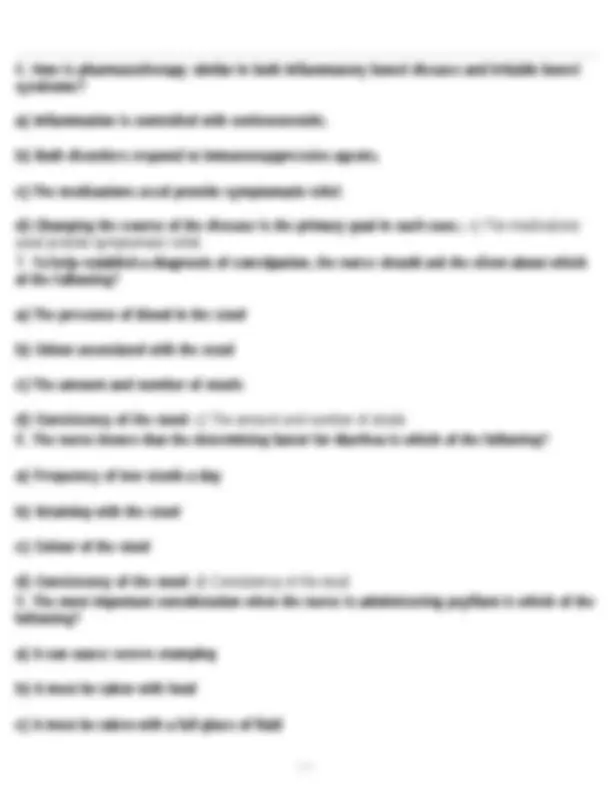
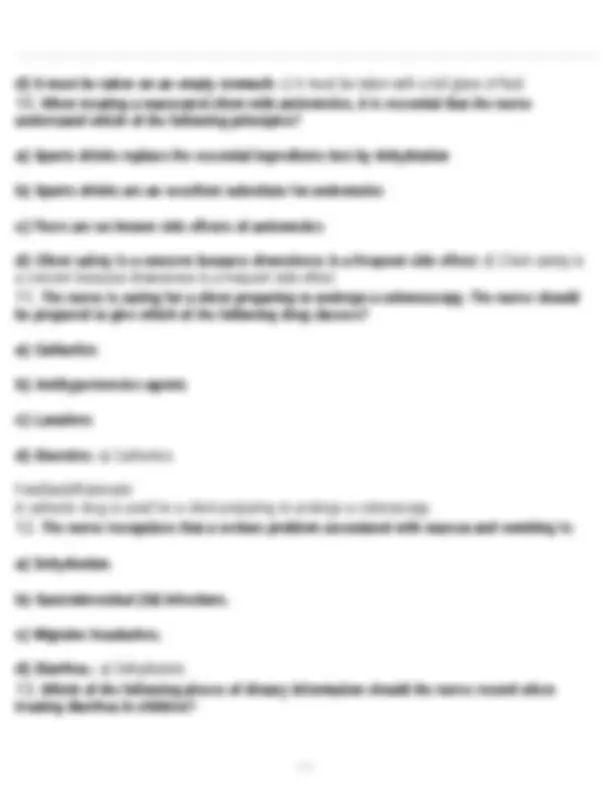
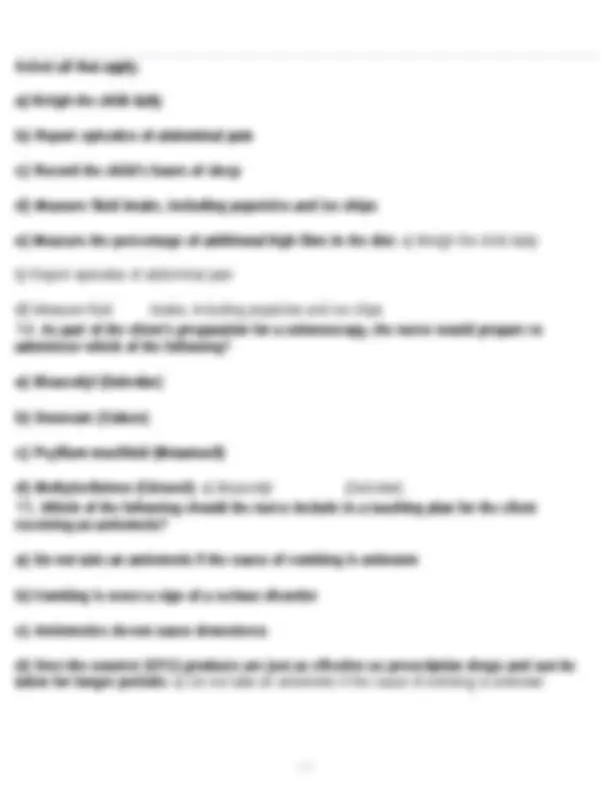
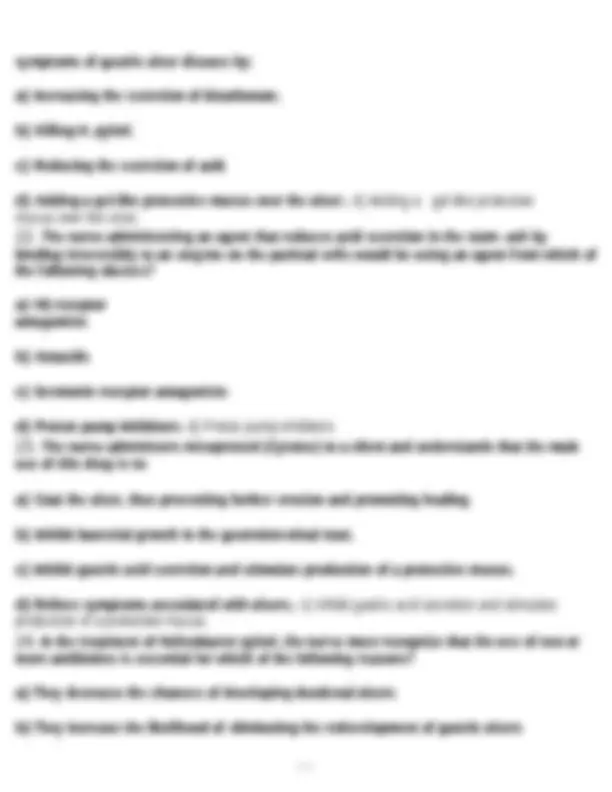
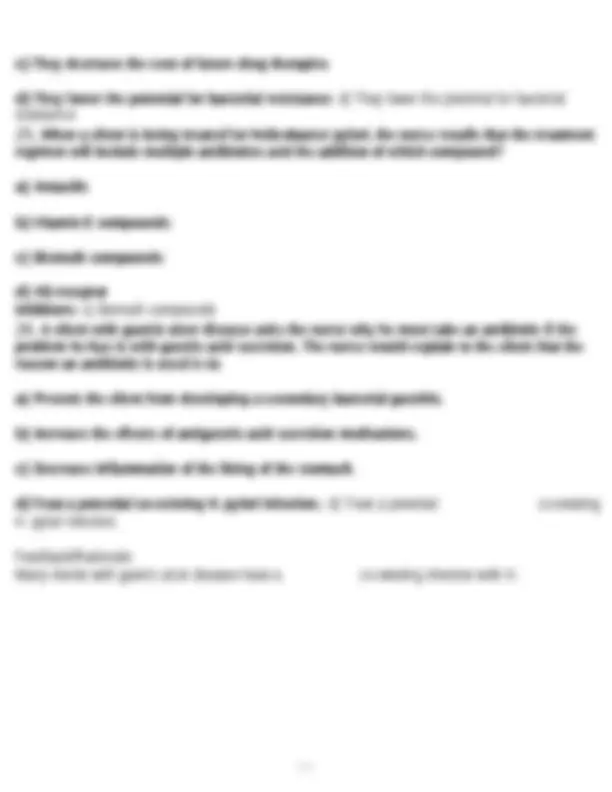
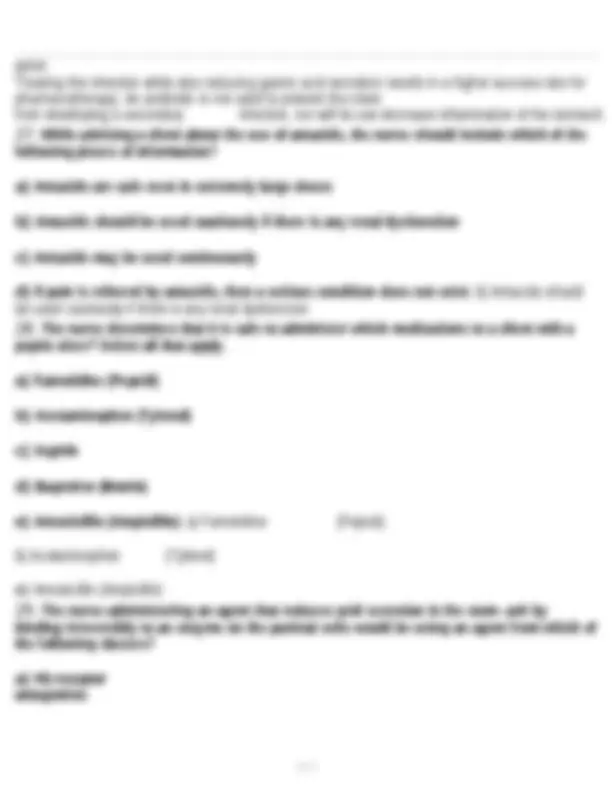
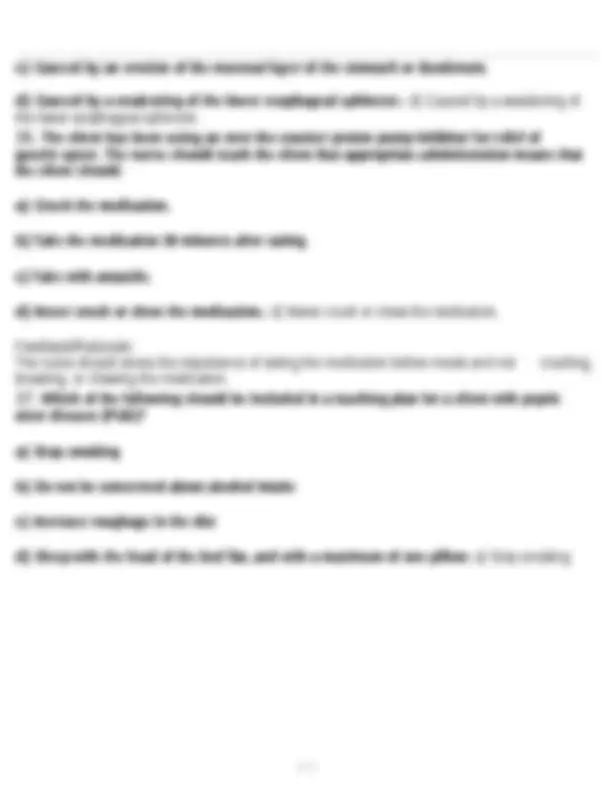


Study with the several resources on Docsity

Earn points by helping other students or get them with a premium plan


Prepare for your exams
Study with the several resources on Docsity

Earn points to download
Earn points by helping other students or get them with a premium plan
Community
Ask the community for help and clear up your study doubts
Discover the best universities in your country according to Docsity users
Free resources
Download our free guides on studying techniques, anxiety management strategies, and thesis advice from Docsity tutors
Gastrointestinal Medications practice questions verified answers /revised/24/25
Typology: Exams
1 / 13

This page cannot be seen from the preview
Don't miss anything!








b) Opioids c) Laxatives d) Bulk-forming agents: b) Opioids
d) It must be taken on an empty stomach: c) It must be taken with a full glass of fluid
Select all that apply. a) Weigh the child daily b) Report episodes of abdominal pain c) Record the child's hours of sleep d) Measure fluid intake, including popsicles and ice chips e) Measure the percentage of additional high fibre in the diet: a) Weigh the child daily b) Report episodes of abdominal pain d) Measure fluid intake, including popsicles and ice chips
Feedback/Rationale: The most appropriate agent for use as an initial treatment for symptoms of GERD would be an H2- receptor blockers, such as ranitidine (Zantac). Many clients see medical attention for GERD after having tried one or several over-the-counter preparations for symptomatic control, including a number of antacids or weaker for- mulations of the H2-receptor antagonists. Cytotec does inhibit gastric acid secreti but it is usually used as prophylaxis for clients who are on high doses of nonsteroidal anti-inflammatory drugs (NSAIDs). The antacids, such as aluminum hydrochlorid and sucralfate, provide symptomatic relief but do not promote ulcer healing.
symptoms of gastric ulcer disease by: a) Increasing the secretion of bicarbonate. b) Killing H. pylori. c) Reducing the secretion of acid. d) Adding a gel-like protective mucus over the ulcer.: d) Adding a gel-like protective mucus over the ulcer.
pylori. Treating this infection while also reducing gastric acid secretion results in a higher success rate for pharmacotherapy. An antibiotic is not used to prevent the client from developing a secondary infection, nor will its use decrease inflammation of the stomach.
b) Proton pump inhibitors c) Serotonin receptor antagonists d) Antacids: b) Proton pump inhibitors
c) Caused by an erosion of the mucosal layer of the stomach or duodenum. d) Caused by a weakening of the lower esophageal sphincter.: d) Caused by a weakening of the lower esophageal sphincter.